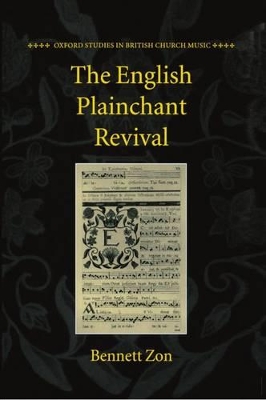Oxford Studies in British Church Music
1 total work
This study provides a general introduction to the sources of the plainchant revival in eighteenth- and nineteenth-century England. Part I examines the eighteenth-century Catholic revival, in particular the work of John Frances Wade, a Roman Catholic plainchant scribe and publisher. His work centred on the Roman Catholic foreign embassy chapels in London during the waning years of the recusancy period, and his collaboration with contemporary publishers and musicians
is evidenced in numerous contemporary letters, music manuscripts, and printed works. In Part II the starting point for the Roman Catholic revival is Novello's A Collection of Sacred Music and for the Anglican revival, Reinagle's A Collection of Psalm & Hymn Tunes. Pro-Gregorian enthusiasts monitored
the progress of the revival well into the nineteenth century, but it was not until the late 1830s that plainchant became a cause célèbre in Anglican and Catholic worship alike. A multiplicity of plainchant publications followed well into the 1870s, with Thomas Helmores ranking first among them. By this time plainchant had become an integral, albeit controversial, part of musical worship in both churches.
Bennett Zon brings together a host of previously undiscovered or unknown eighteenth- and nineteenth-century sources, drawing mainly upon printed and manuscript works. Contemporary periodical and occasional literature provide further insight into their musical and social contexts.
This is as much a source book for ecclesiastical history of the eighteenth and nineteenth centuries as it is a chronicling of the plainchant revival, and it will be of interest to ecclesiastical historians, plainchant enthusiasts, church musicians, and bibliographers.
is evidenced in numerous contemporary letters, music manuscripts, and printed works. In Part II the starting point for the Roman Catholic revival is Novello's A Collection of Sacred Music and for the Anglican revival, Reinagle's A Collection of Psalm & Hymn Tunes. Pro-Gregorian enthusiasts monitored
the progress of the revival well into the nineteenth century, but it was not until the late 1830s that plainchant became a cause célèbre in Anglican and Catholic worship alike. A multiplicity of plainchant publications followed well into the 1870s, with Thomas Helmores ranking first among them. By this time plainchant had become an integral, albeit controversial, part of musical worship in both churches.
Bennett Zon brings together a host of previously undiscovered or unknown eighteenth- and nineteenth-century sources, drawing mainly upon printed and manuscript works. Contemporary periodical and occasional literature provide further insight into their musical and social contexts.
This is as much a source book for ecclesiastical history of the eighteenth and nineteenth centuries as it is a chronicling of the plainchant revival, and it will be of interest to ecclesiastical historians, plainchant enthusiasts, church musicians, and bibliographers.
